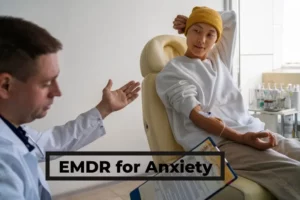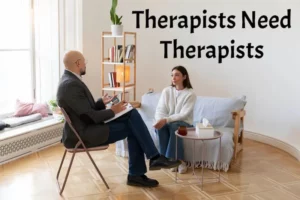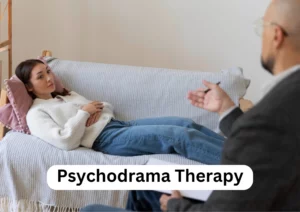Introduction
Obsessive Compulsive Disorder (OCD) is a common mental disorder that managed to affect about 1% of the global population last year. One of the most popular solutions for it is known as Compulsive Behavioural Therapy (CBT). CBT uses Exposure and Response Prevention (ERP) and cognitive restructuring techniques, which are effective in treating OCD.
CBT for OCD
Cognitive Behavioural Therapy (CBT) consists of the following primary techniques: Exposure and Response Prevention (ERP) and Cognitive Restructuring.
ERP works by exposing patients to situations that trigger their anxiety. It is done hierarchically, from the least anxiety-inducing situations to most. It allows the patient to process the situation, and the distress fades away. It consists of many components, such as real-life exposure, imagined exposure, and response prevention by stopping compulsion.
Additionally, cognitive restructuring involves identifying as well as challenging obsessive thoughts and trying to replace them with more realistic ones. Thought records and relaxation techniques can be used alongside ERP and cognitive restructuring for a more effective approach.
A full CBT course can last up to 12 – 20 weekly sessions plus follow-ups. Also, intensive programs with 2+ hours of exposure daily over 3-4 weeks have proven to be highly effective. Furthermore, 85-90% of people see improvement through this.
How Does CBT Work for OCD
To break the connection between anxious rituals and obsessive thoughts in the brain, go for CBT. By exposing the patients to their triggers and not allowing them to switch to their relief rituals quickly, CBT does the magic. It advantages you by reducing anxiety and by making the distress go away. Basically, it makes you more immune.
Similarly, cognitive constructing teaches a patient to think more rationally and avoid obsessive thoughts. This way, patients learn to fight their OCD cycles even without CBT over time. And due to their previous lessons, they don’t feel the urge to go for their coping mechanisms when they feel conscious of their anxiety. Even researchers have confirmed that after years of CBT, its positive effects prevail, and the gains continue to help you. In brief, CBT helps you break cycles of OCD through healthier therapy options.
How To Do CBT for OCD
To do CBT for OCD, firstly, we will start by educating the patient on the CBT model so they are aware enough. Secondly, we will make the patient document their obsessions, anxiety, the rituals they do, and possible temporary relief to identify the target.
Next, we will make a hierarchy of the least to most distressing obsession triggers to guide the gradual exposure process. We will further prevent the usual rituals to relieve anxiety but instead present triggers until the anxiety fades away.
Then, the patient can discuss their exposure experiences and share management of anxiety and faulty beliefs. Finally, the patient will be assigned daily ritual prevention and exposure practices to perform.
Once the exposure therapy is adjusted, thought restructuring can be introduced. This will help the patient question and challenge their obsessive thoughts and change them with more logical ones. Relaxation techniques like breathing exercises and meditation can also be included to manage anxiety.
CBT Centres for OCD
To start with the CBT treatment, you have to find the right place to be in for your treatment. Considering the expansion in healthcare these days, there are several options you can choose from:

- Mental health clinics are these days well equipped to help you practice CBT or exposure therapy. These are usually assisted by experienced psychologists.
- Increasing access to it, larger hospitals have programs and session’ options available to choose from on a regular and alternative basis.
- Just like this information, there are online resources available as well. For practicing it yourself in the comfort of your space, check out self-help workbooks and other such resources.
- For broader access, there are now therapists available virtually to help you with it through a variety of platforms.
- Last but not least, keep a periodic check on your progress. Take a look at apps available for better exposure, symptom tracking, and other tools for supporting your treatment.
Conclusion
So, to sum it all up, Exposure Therapy and Cognitive Restructuring in CBT are highly effective for treating OCD. Exposure therapy has a lot of strong research support and is considered one of the best behavioral treatments for OCD. Your Typical CBT treatment can include psycho-education, making an exposure hierarchy, preventing rituals during exposures, and cognitive restructuring.
An outpatient CBT is mostly performed in 12-20 weekly sessions in 4-6 months, depending on the severity of the condition. For a more intensive version, more hours could be invested in this, along with some medications, if the symptoms of CBT prevail over time.
Since there might not always be enough individual CBT therapists, opting for group CBT can particularly help. Statistics suggest that 6-7 out of 10 patients can cope with their OCD through CBT treatment. Hence, there’s always a way out of it, and you can check United We Care for more information!
References
- R.C. Wyatt and E.L. Seid, “Cognitive Behavioral Therapy with Donald Meichenbaum, PHD,” [Online]. Available: https://www.psychotherapy.net/video/meichenbaum-cognitive-behavioral-therapy. Accessed: [Insert Date].
- “Understanding CBT for OCD,” Center for the Treatment and Study of Anxiety, University of Pennsylvania, [Online]. Available: https://www.med.upenn.edu/ctsa/forms_ocd_cbt.html. Accessed: [Insert Date].
- American Psychiatric Association, “Diagnostic and Statistical Manual of Mental Disorders (5th ed.),” Washington, DC: Author, 2013.
- “Cognitive Behavior Therapy, 2019,” BeyondOCD.org, [Online]. Available: https://beyondocd.org/information-for-individuals/cognitive-behavior-therapy. Accessed: [Insert Date].
- “What is Cognitive Behavioural Therapy (CBT)?”, OCDUK.org, [Online]. Available: https://www.ocduk.org/overcoming-ocd/cognitive-behavioural-therapy/. Accessed: [Insert Date].
- Z. Marsden, K. Lovell, D. Blore, S. Ali, and J. Delgadillo, “A randomized controlled trial comparing EMDR and CBT for obsessive–compulsive disorder,” *Clinical Psychology & Psychotherapy*, vol. 25, no. 1, pp. e10-e18, 2018.










